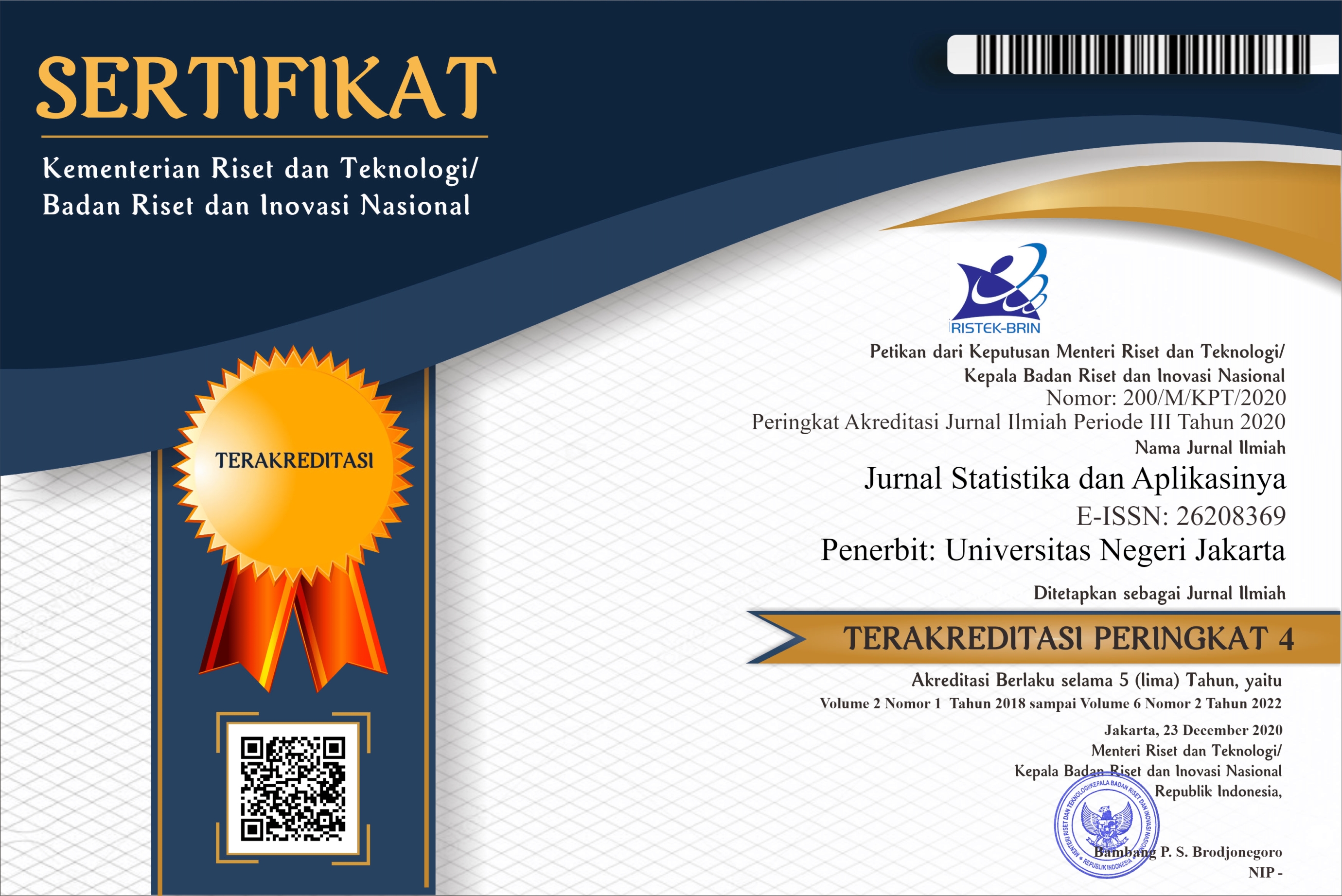Regresi Data Panel Untuk Pemodelan Jumlah Penderita Tuberculosis di Kabupaten Bojonegoro
DOI:
https://doi.org/10.21009/JSA.06212Keywords:
tuberculosis, panel data regression, fixed effect model (FEM), coefficient of determinationAbstract
Tuberculosis is a type of infectious disease that is contagious and causes death. In Bojonegoro district, the number of tuberculosis patients is quite high, reaching 3,401 patients in 2019. The DOTS strategy has been used, but it is not optimal in reducing the incidence of tuberculosis. Therefore, research is needed to determine the faktors that significantly cause the incidence of tuberculosis and predict the incidence of tuberculosis for some time to come. The incidence of tuberculosis is not only influenced by the faktors causing tuberculosis but is also influenced by a certain period of time. So that in this study the panel data regression method will be used to model the number of tuberculosis patients in Bojonegoro district in 2018-2020. The variables used are the number of tuberculosis sufferers (Y), the number of stunting cases (X1), the number of trained health workers (X2), the number of proper sanitation (X3), the number of PHBS households (X4), and the number of productive age population ( X5). Based on the analysis results show that the best estimation model is using the Fixed Effect Model (FEM) approach. The variables that significantly affect the number of tuberculosis sufferers in Bojonegoro district in 2018-2020 are the number of stunting cases (X1), the number of proper sanitation (X3) and the number of productive age population (X5) with a coefficient of determination of 71%.






